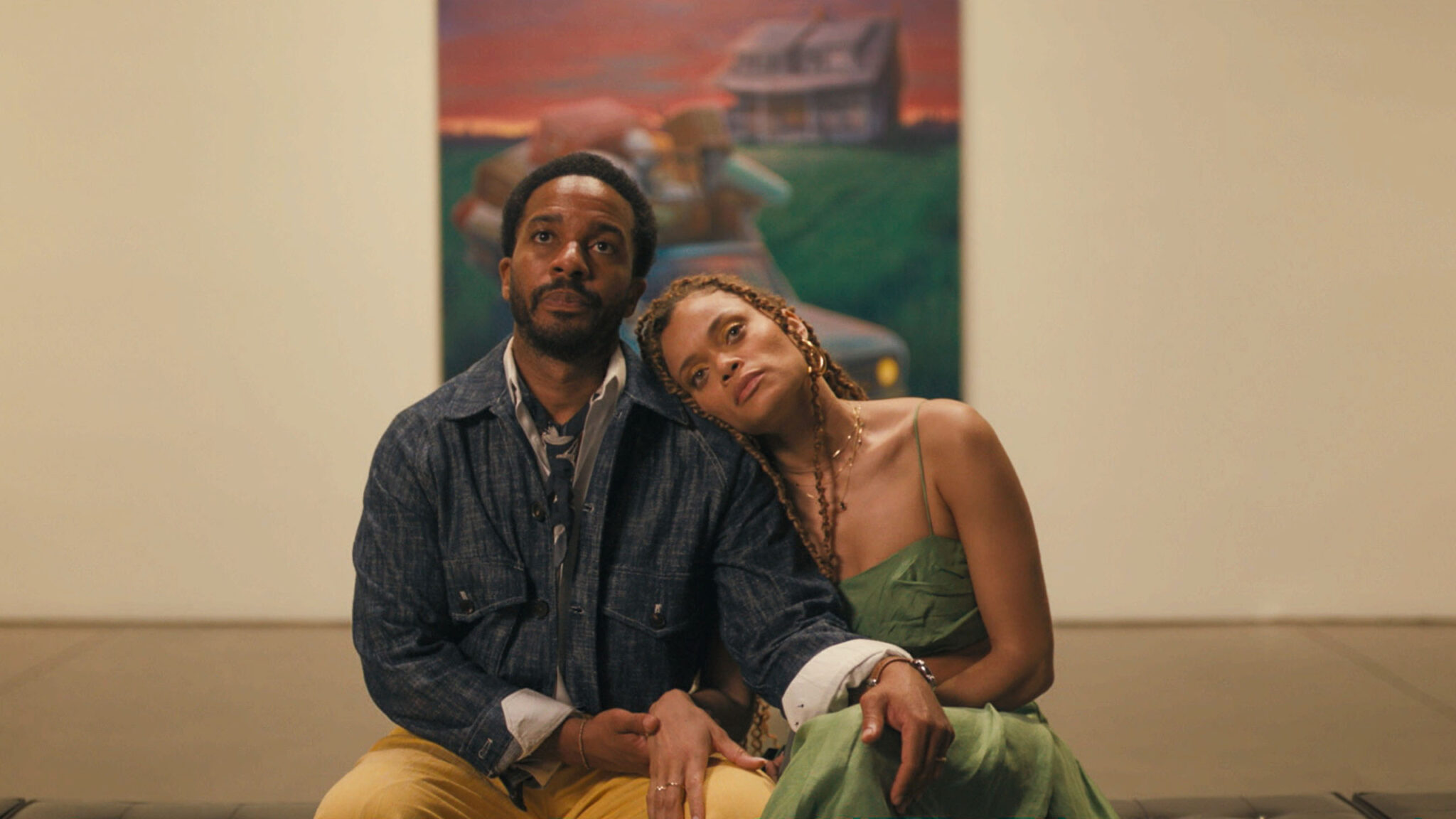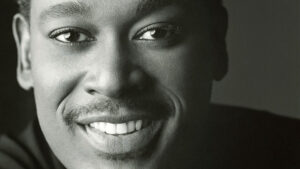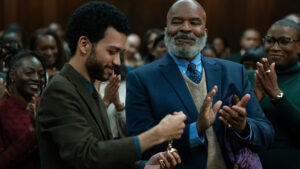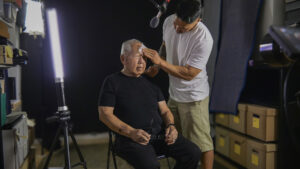By Bailey Pennick
One of the most exciting things about the Sundance Film Festival is having a front-row seat for the bright future of independent filmmaking. While we can learn a lot about the filmmakers from the 2024 Sundance Film Festival through the art that these storytellers share with us, there’s always more we can learn about them as people. This year, we decided to get to the bottom of those artistic wells with our ongoing series: Give Me the Backstory!
“I told André Holland that if he wanted this role, he had to learn how to paint,” Titus Kaphar says. “I didn’t want him holding the brush as though it was his first time. I needed to fully believe that every canvas made in this film was made with his hands.” Tarrell (the protagonist of Kaphar’s feature debut) is a world renowned visual artist, not unlike the writer-director himself, so this level of authenticity was crucial.
Holland (Moonlight, The Knick) was more than up for the task, inhabiting the artistry and truth necessary for Exhibiting Forgiveness to shine. The film, which premiered in the U.S. Dramatic Competition section of the 2024 Sundance Film Festival, dives into issues of generational trauma, drug addiction, reconciliation, grief, and more, against a striking backdrop of powerful paintings.
“We spent over three months together,” Kaphar recalls, once he and Holland jumped into making the film together. “He made frequent visits to my studio for his lessons. He read the books that I gave him. He made sketches. He made paintings. And in the end, he gave us insight into the creative process that I have rarely seen on the screen.”
Read on to learn more about Kaphar’s process, who he wants to reach with Exhibiting Forgiveness, and what he’s doing when he’s not making films.
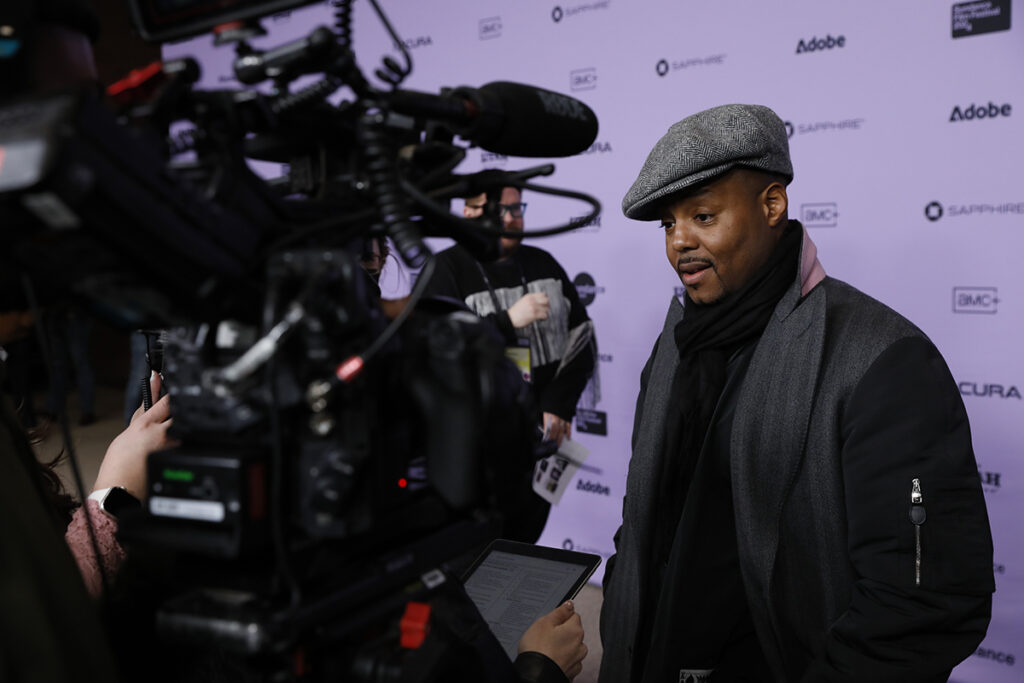
Why does this story need to be told now?
I think that this story will resonate strongest with the generation who grew up in the ’80s and ’90s, during the influx of drugs into cities across the nation. The children of those addicts are now parents. And as parents, our children are old enough to ask us difficult questions about our past. This film attempts to open the door for those challenging conversations.
Films are lasting artistic legacies; what do you want Exhibiting Forgiveness to say?
I hope that the film delivers a unique perspective on our conventional ideas of forgiveness. I hope that it stands as an offering to folks who have suffered harm at the hands of those who should have nurtured them.
What was a big challenge you faced while making this film?
The biggest challenge we faced while making this film was the fact that there was a strike in the middle of it. There were definitely days when we didn’t know when we would get back to shooting.
Your favorite part of making Exhibiting Forgiveness?
Working with my DP Lachlan Milne was a special experience. As a visual artist, I was nervous about finding the cinematographer who could help me transform the script into paintings in motion. Although Lachlan is an extraordinary cinematographer, he sees the world like a painter. We speak the same language.
Tell us why and how you got into filmmaking.
I got into filmmaking accidentally. It’s a long story, but I ended up filming my father after having been estranged for almost 20 years. I had a digital SLR. At our reencounter, for some reason, I decided to hit “record.”
Why is filmmaking important to you? Why is it important to the world?
For me, film is the art form of the people. It’s democratically accessible in a way that some of the most esteemed museums and fine art institutions often are not. I could personally spend days at a museum, but the average visitor looks at a painting for less than thirty seconds. Film allows you to engage with the viewer over hours. That is a unique privilege that very few other mediums can offer.
Tell us about your history with Sundance Institute. When was the first time you engaged with us?
I first heard about Sundance through my dear friend Hank Willis Thomas who did a project called Question Bridge. If I’m ever deciding between two films to watch, and one had Sundance [Film Festival] laurels on it and the other one doesn’t, guess which I would pick?
What was the last album you listened to?
I was privileged to hear Andra Day’s as-of-yet unreleased new album. It is extraordinary. Her song “Bricks,” which features in Exhibiting Forgiveness, is indicative of the kind of lyricism and powerful vocals on the rest of her album.
What is something that all filmmakers should keep in mind in order to become better cinematic storytellers?
Film can be painting in motion.
If you weren’t a filmmaker, what would you be doing?
If I wasn’t a filmmaker, I would be the President of a not-for-profit organization that focuses on advancing the careers of the next generation of Black and Brown artists. Working with my best friend, Jason Price, I would give away studio spaces, a generous stipend, and housing. We would have a program where high school students work as apprentices to our artist Fellows, introducing them to the highest caliber of art making by dedicated artists committed to the community. We would have ground breaking exhibitions in our gallery, screen films and host performances in our state of the art black box theater. Deborah Berke would design the space. I would call it NXTHVN.




